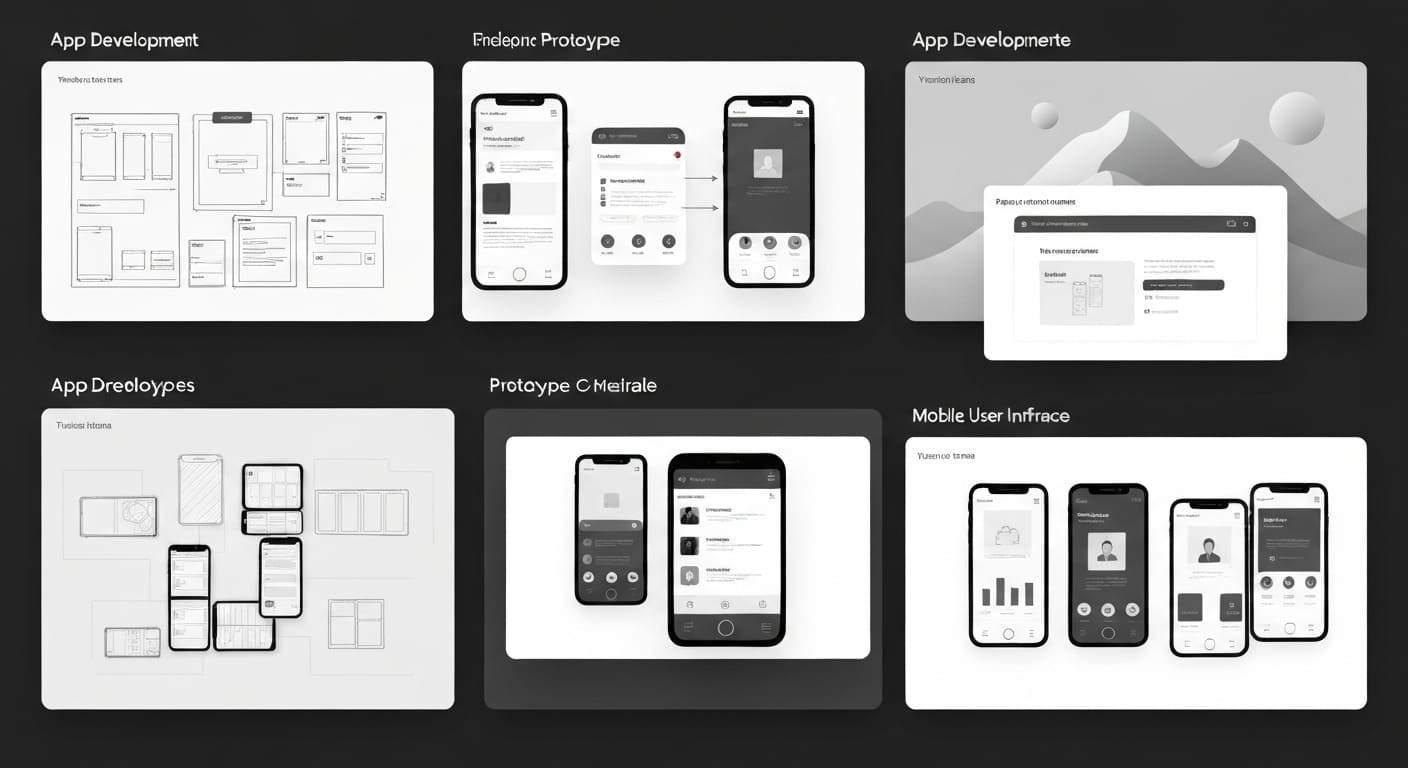Struggling to manage the flood of data for your AI projects? You’re not alone. Building an AI data pipeline that scales seamlessly isn’t easy—data silos, slow processes, and storage headaches can kill your momentum. In this guide, I’ll show you exactly how to build a scalable AI data pipeline that tackles these challenges head-on, leveraging the right ETL methods, understanding batch versus stream processing, and using cloud storage effectively. Ready to turn your data chaos into AI-ready gold? Let’s dive in.
Understanding ETL in AI Data Pipelines
ETL—Extract, Transform, Load—is the backbone of any efficient AI data pipeline. It defines the process of moving raw data from its source into a format and location where AI models can digest, learn, and make predictions. Without a robust ETL process, AI models risk being trained on incomplete, inconsistent, or outdated data, undermining accuracy and reliability.
Breakdown of ETL Stages as Applied to AI Data
- Extract: Pulling data from diverse sources such as transactional databases, APIs, IoT devices, and third-party services. For AI projects, this extraction handles high data variety and volume, often drawing unstructured data like images, text, and sensor feeds.
- Transform: Preparing data to be AI-ready. This includes cleaning (removing duplicates, fixing errors), normalization (standardizing formats), feature engineering (adding derived insights), and sometimes anonymization for compliance.
- Load: Delivering transformed data into target systems like AI training environments, data lakes, or feature stores. Efficient loading ensures low latency for near real-time model updates or batch model retraining.
Common Tools and Technologies Used for ETL in AI Projects
Modern AI data pipelines leverage specialized ETL platforms and frameworks designed to handle scale and complexity, including:
- Apache NiFi and Fivetran for automated data extraction
- dbt (data build tool) for transform logic in SQL-centric workflows
- AWS Glue, Google Cloud Dataflow, and Azure Data Factory as cloud-native ETL services with integration to cloud storage
- Apache Spark for large-scale distributed transformations, especially for batch processing at scale
Challenges in ETL with AI Datasets
AI datasets often amplify the classic ETL challenges:
- Volume: Handling terabytes or petabytes of raw data requires distributed processing and fault-tolerant workflows.
- Velocity: Data streams continuously, demanding near real-time ETL updates for models that learn on the fly.
- Variety: Diverse formats—from CSV and JSON to images and video—require flexible transformation pipelines capable of complex parsing and feature extraction.
To overcome these hurdles, AI data pipelines often combine traditional ETL with emerging frameworks that support streaming and automation, ensuring data freshness and consistency.
Batch vs Stream Processing: Choosing the Right Approach
A core decision in designing an AI data pipeline lies in choosing between batch and stream processing. Both methods serve different purposes and workloads, and the choice significantly impacts model performance and operational complexity.
Definition and Key Characteristics of Batch Processing
Batch processing groups data into large chunks and processes them periodically—hourly, daily, or weekly. This model suits scenarios where real-time insights aren’t essential but computational efficiency and data completeness are priorities.
Characteristics:
- Processes comprehensive datasets at predefined intervals
- Simplifies complex transformations with stable data snapshots
- Usually incurs higher latency between data ingestion and model consumption
Definition and Key Characteristics of Stream Processing
Stream processing ingests and processes data continuously as it arrives, enabling real-time or near-real-time analytics and decision-making essential for time-sensitive AI applications.
Characteristics:
- Low latency processing with event-driven triggers
- Handles continuous million-event data flows efficiently
- Supports adaptive AI models that retrain or update in real time
Use Cases Best Suited for Batch vs Stream in AI
- Batch: Model retraining with historical data, large-scale feature extraction, predictive analytics on sales or user behavior over time, offline training of recommendation systems.
- Stream: Fraud detection in finance, real-time personalization in e-commerce, monitoring and alerting in IoT applications, autonomous vehicle sensor data analysis.
Pros and Cons Comparison of Each Method
| Aspect | Batch Processing | Stream Processing |
| Latency | High – suitable for non-urgent updates | Low – ideal for real-time insights |
| Complexity | Easier to implement and debug | More complex due to event-driven logic |
| Resource Usage | Efficient for bulk processing | Requires sustained compute and memory |
| Data Freshness | Data snapshot per cycle | Always up to date with live data |
| Scalability | Scales horizontally with cluster work | Requires fine-tuning for high throughput |
Choosing the right method means aligning your AI project’s goals with the nature of the data and the decision latency required.
Leveraging Cloud Storage for Scalable AI Pipelines
Cloud storage is the keystone for scalable, flexible AI data pipelines, especially when dealing with rapidly growing datasets and distributed teams.
Overview of Popular Cloud Storage Options
- AWS S3: A highly durable object storage known for its scalability and rich ecosystem integration. Also supports S3 Select and storage tiers to manage cost-performance trade-offs.
- Google Cloud Storage: Offers high availability and seamless integration with Google AI tools like Vertex AI. Comes with lifecycle management and nearline/coldline storage options for cost savings.
- Azure Blob Storage: Flexible object storage with robust security controls and integration with Azure Machine Learning and Databricks for AI workloads.
Benefits of Cloud Storage for AI Pipelines
- Scalability: Automatically handles infinite scaling, essential as AI datasets grow exponentially.
- Cost-Effectiveness: Pay-as-you-go models and tiered storage optimize cost based on data access frequency.
- Accessibility: Cloud APIs enable easy data access for distributed teams and AI services worldwide.
- Data Versioning & Lineage: Many platforms offer version control to track data changes critical for reproducibility in AI experiments.
Best Practices for Organizing and Managing AI Data in Cloud Storage
- Implement structured folder hierarchies separating raw, transformed, and model-ready datasets.
- Use metadata tagging for easy searchability and governance.
- Enable data lifecycle policies to archive or delete stale data automatically.
- Employ feature stores integrated with storage to centralize feature management and reuse.
Security and Compliance Considerations When Storing AI Data
Data privacy and security are paramount, especially with sensitive or regulated datasets:
- Encrypt data at rest and in transit using cloud-native tools (e.g., AWS KMS, GCP CMEK).
- Implement strict access control policies and identity and access management (IAM) roles to prevent unauthorized data access.
- Audit logs and compliance certifications like HIPAA, GDPR, or FedRAMP can be critical depending on your industry.
- Consider data anonymization or tokenization during transformation to minimize exposure.
Advanced Strategies and Future Trends in AI Data Pipelines
As AI data pipelines grow more complex, new technologies and methodologies are emerging to keep pipelines agile, cost-efficient, and scalable.
Automation and Orchestration Tools for AI Pipelines
Tools like Apache Airflow and Kubeflow Pipelines automate the end-to-end workflow:
- Define complex ETL and training workflows as code, improving maintainability.
- Schedule, monitor, and recover failed tasks automatically.
- Enable seamless integration between batch and streaming components.
Integration of Real-time Analytics and AI Model Retraining
Modern pipelines increasingly combine data ingestion with real-time analytics engines and incorporate continuous model retraining to adapt to changing data trends quickly.
- Leverage platforms like Kafka Streams or Apache Flink for seamless streaming analytics integration.
- Build retraining triggers based on data drift detection or model performance decline to ensure AI models remain effective.
Trends Like Serverless Computing and Edge Data Processing
- Serverless architectures (e.g., AWS Lambda, Google Cloud Functions) enable scalable, pay-per-use compute, reducing infrastructure overhead in ETL and transformation stages.
- Edge computing processes data close to its source (e.g., on IoT devices), lowering latency and bandwidth costs, essential for applications like autonomous vehicles and smart manufacturing.
How AI Pipelines Are Evolving with Multi-cloud and Hybrid Cloud Setups
Multi-cloud and hybrid cloud strategies provide resilience, cost optimization, and regulatory compliance flexibility:
- Use abstraction layers and containerized pipeline components to deploy seamlessly across clouds.
- Employ orchestration tools handling data and compute distribution across different environments.
- Manage data sovereignty and latency by choosing localized cloud regions for sensitive or high-speed data.
Conclusion
Building a scalable AI data pipeline isn’t just about moving data—it’s about creating a robust foundation for your AI models to thrive. By mastering ETL processes, strategically picking between batch and stream processing, and leveraging the power of cloud storage, you set your AI projects on the path to success. For businesses ready to elevate their AI infrastructure, WildnetEdge offers trusted solutions and expertise to build and optimize these advanced data pipelines. Ready to scale your AI capabilities with confidence? Connect with WildnetEdge today.
FAQs
Q1: What is an AI data pipeline, and why is ETL important?
An AI data pipeline moves data from source systems to AI models. ETL helps by extracting raw data, transforming it into clean, relevant formats, and loading it into environments suited for AI training and analysis—ensuring data quality and consistency critical for model accuracy.
Q2: When should I use batch processing versus stream processing in an AI pipeline?
Use batch processing when working with large volumes of data where real-time updates aren’t necessary, such as offline model training. Stream processing fits scenarios requiring real-time or near-real-time insights, like fraud detection or live personalization.
Q3: How does cloud storage improve scalability in AI data pipelines?
Cloud storage offers virtually unlimited capacity, easy global accessibility, and flexible cost management—allowing AI pipelines to dynamically scale as data volumes fluctuate without upfront infrastructure investments.
Q4: What are common challenges in building scalable AI data pipelines?
Managing large, varied datasets; maintaining low latency; balancing costs; and securing sensitive information from breaches or misuse are typical hurdles in scaling AI pipelines effectively.
Q5: How can WildnetEdge help optimize AI data pipelines?
WildnetEdge provides expert guidance and tailor-made AI pipeline solutions that address scalability, automation, and security, ensuring your AI infrastructure performs optimally and delivers maximum ROI.

Nitin Agarwal is a veteran in custom software development. He is fascinated by how software can turn ideas into real-world solutions. With extensive experience designing scalable and efficient systems, he focuses on creating software that delivers tangible results. Nitin enjoys exploring emerging technologies, taking on challenging projects, and mentoring teams to bring ideas to life. He believes that good software is not just about code; it’s about understanding problems and creating value for users. For him, great software combines thoughtful design, clever engineering, and a clear understanding of the problems it’s meant to solve.
 sales@wildnetedge.com
sales@wildnetedge.com +1 (212) 901 8616
+1 (212) 901 8616 +1 (437) 225-7733
+1 (437) 225-7733































